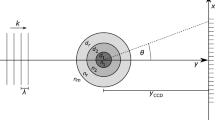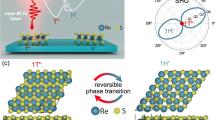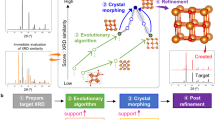Abstract
THE use of a crystal as a grating for measuring the wave-lengths of Röntgen rays affords a beautiful illustration of the value of a second reference frame that may be associated with the customary reference frame of vector analysis. Let e1 e2 e3 be the prime vectors of the customary frame. The second or derived frame, the prime vectors of which we will denote by e1 e2 e3 with superior affixes, is such that the scalar products x.e1 x.e2 x.e3 of any vector x and the original prime vectors are the cartesian components of the vector in the derived frame, and the scalar products x.e1 x.e2 x.e3 of the vector x and the derived prime vectors are the cartesian components of the vector in the original frame.
This is a preview of subscription content, access via your institution
Access options
Subscribe to this journal
Receive 51 print issues and online access
$199.00 per year
only $3.90 per issue
Buy this article
- Purchase on SpringerLink
- Instant access to full article PDF
Prices may be subject to local taxes which are calculated during checkout
Similar content being viewed by others
Rights and permissions
About this article
Cite this article
MAIR, D. The Crystal as Diffraction Grating. Nature 117, 157–158 (1926). https://doi.org/10.1038/117157b0
Issue date:
DOI: https://doi.org/10.1038/117157b0



